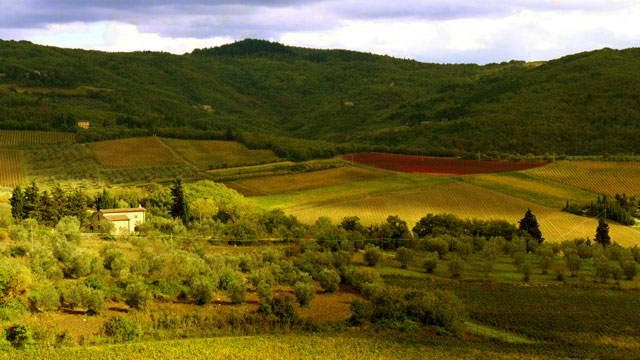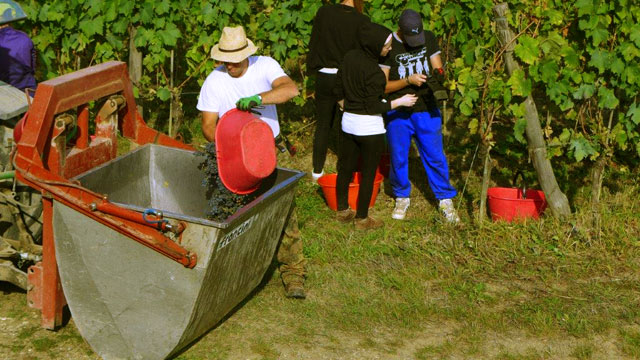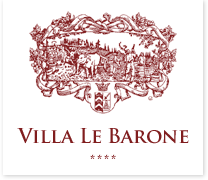
The grape harvest around Villa le Barone, in the heart of Chianti Classico, is over and all winemakers are telling us: 2015 will be an exceptional vintage for the Chianti Classico wines”…
But as these can be sold only two years after the harvest, we will have to wait until the 2017 season to enjoy them. Nothing lost! … You can still treat yourself in 2016 to the wonderful wines from previous years served in our restaurant and make wine tastings and winery visits that Villa le Barone will arrange for you!
Wine harvest is always a feast, but wine making is a rigorous process that has to be followed carefully.
First important step is harvesting. One can see along the Chianti roads grape pickers carefully selecting the best grapes and picking them up manually onto buckets for tractors to pull these almost overflowing to the wineries.
The following steps to produce wine (and these will be better presented to you during a wine tasting that Villa le Barone can organize for you) are: laying the clusters on a treadmill on the sides of which men and women make a manual selection to remove the leaves and only keep the best bunches, the cluster now pass into a de-stemming machine to separate the berries from the stalk (if left, stalks can give unpleasant herbaceous flavors to the wine), at this stage the grape berries are somewhat crushed and release some of their juice. Mashed grapes with their skins and juice fill large vats (steel, cement, sometimes wood) for maceration and fermentation during approximately twenty two days. During this period, twice a day, the contents of the vats is turned over in order for the floating skins to be pushed down in the juice and bring their red color to the wine. After this very important fermentation period, the fermented juice is clarified … Now comes the “ageing” period, usually in oak barrels, while some innovators are now using terracotta urns, as in Etruscan times, in order to produce biodynamic wines with a higher oxygen exchange. For Chianti Classico Riserva, a minimum ageing of 24 months, including at least three months in bottle is required.

You will see in Villa le Barone, at the entrance of the restaurant in the old cellar, the old press and other equipment that was used when the Villa was producing wine. Modern machines with sensors and electronics are now in charge of doing and monitoring the process, but the principle remains the same!
This month of October was beautiful and vineyards took on marvelous autumn colors depending on the patches of vines. In front of Villa le Barone, one of the vineyards’ parcel turns every year significantly darker red than the others, thus marking the landscape: this patch is the “Canaiolo”, one of the grapes used in addition to Sangiovese to produce Chianti Classico.
According to the production code of Chianti Classico, the minimum percentage of Sangiovese, the typical grape of the area, must be 80%, while for the other 20% winemakers may use other local red varieties, such as Canaiolo or Colorino. Of course, Chianti Classico may and sometimes is produced with 100% Sangiovese grape.
You can admire these magnificent landscapes of vines while staying at Villa le Barone in the heart of the Chianti Classico region. Cellar visits and wine tasting can be arranged for you and you can treat yourself in our restaurant to the best Chianti Classico wines from the area. What could be better ?
